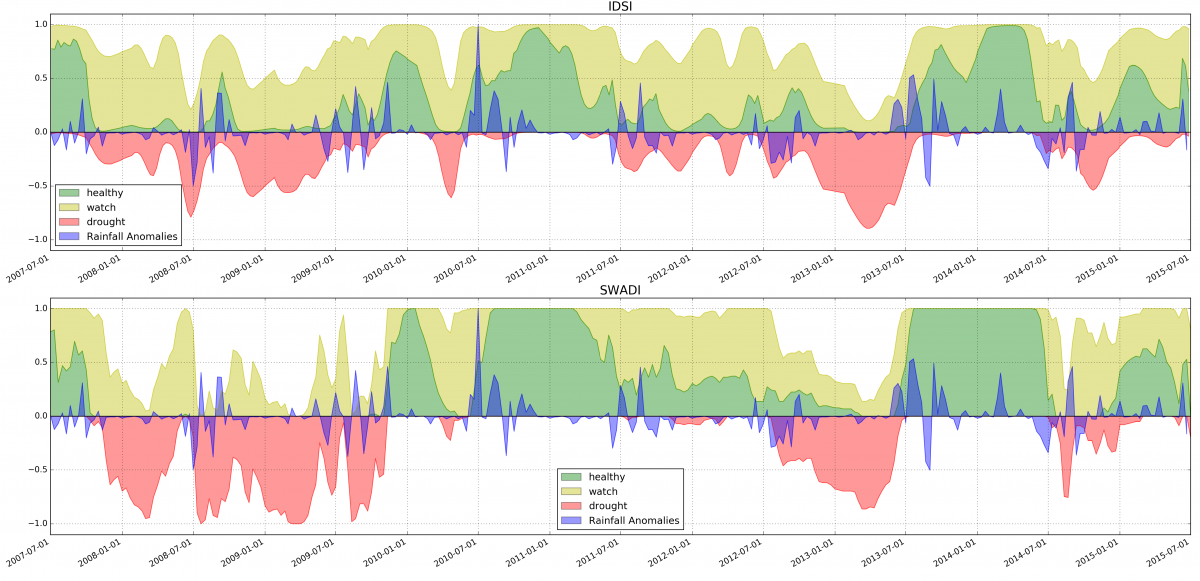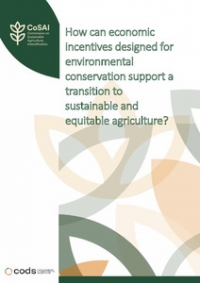In Kurunegala District of Sri Lanka’s North Western Province, fields that would ordinarily be planted to maturing rice crops are practically abandoned; the channels that would bring water to irrigate them are dry; and the reservoirs built to supply this water are nearly empty. Farmers in the area are finding ways to adapt, such as growing small plots of maize with groundwater from wells. But clearly, the prolonged drought has seriously undermined their livelihoods – with even supplies of drinking water running low – and put the country’s rice-based food system under pressure.

A water-related disaster unfolds in Sri Lanka
The drought began in late 2016 to early 2017, reducing water supplies for crop irrigation during the Maha or main monsoon season (September to March). As reported in the media then, this prompted a considerable decrease in plantings, widespread crop losses and sharply reduced yields.
In the latter half of May 2017, heavy rains caused localized floods and landslides, especially in Southwestern Sri Lanka. Although these rains brought some relief to drought-affected areas in the Southwest, water supplies remained severely constrained in the main rice-producing districts of the North Central and Eastern parts of the country.
Low rainfall in the first half of the Yala season (May to September) made the situation especially critical in the country’s Northern, North Central and North Western Provinces. Soil moisture levels are still 50-60% below normal in some areas, and exceptionally high temperatures are forecast for the remainder of the year.
As a result, the country’s rice production (estimated at 2.7 million tons for 2017) will likely be almost 40% less than last year’s output and 35% below the average for the previous 5 years, according to a recent assessment from the Food and Agriculture Organization of the United Nations (FAO).
Vital information for contingency planning
Governments can take steps to mitigate the impacts of drought, including targeted reinforcement of social safety nets and importation of staple grains. But in order for local and national authorities to implement such measures and avoid major disruptions to food systems, they need ready access to near real-time data on moisture conditions.
In a concerted effort to provide such information on a regional basis, the International Water Management Institute (IWMI) undertook the development of the South Asia Drought Monitoring System (SADMS) several years ago through WLE together with the CGIAR Research Program on Climate Change, Agriculture and Food Security (CCAFS). The system forms part of wider CGIAR efforts to enhance the resilience of agriculture in developing country in the face of multiple water-related risks.
Since its inception, Sri Lankan authorities have made use of the SADMS – during a drought in 2014, for example – and have played an active role in field validation. One tool that has proved especially useful is the Soil Water Index (SWI), developed by Europe's Copernicus Programme in fulfilment of its mandate to improve measurement of the Copernicus Essential Climate Variables (ECVs). By providing near real-time readings of moisture at various soil depths, which reflect the degree of infiltration by rainwater, SWI makes it possible to anticipate the impacts of drought on crop production.

Spotting water anomalies
With the aim of further improving the information that such tools provide, researchers recently devised the Soil Water Anomaly Drought Index (SWADI), using time series data. Developed by IWMI in collaboration with the Vienna University of Technology in Austria and Research institute for Geo-hydrological Protection in Italy, SWADI involves the use of radar backscatter measurements from the Advanced Scatterometer (ASCAT) aboard the EUMETSAT MetOp satellite.
IWMI researchers recently calculated the index for all of South Asia from 2007 to the present (see figure1, above). Over the last 10 days, soils in parts of the region have been much drier than usual. Nowhere is current soil moisture as abnormally low as in Northern Sri Lanka and India’s Tamil Nadu state. Although such conditions are a regular occurrence, the current situation stands out for its intensity and persistence, as was also the case during severe droughts in 2012 and 2014.
In stark contrast, conditions are wetter than usual (also shown in figure 1) over large parts of West and Northeast India as well as Bangladesh, which have recently seen torrential rainfall and floods.

New monitoring indices for South Asia
Within the SADMS framework, IWMI is working with the Indian Council of Agricultural Research (ICAR) to share the experimental South Asia Drought Early Warning System (SADEWS) with state officials responsible for monitoring drought. The system will encompass three main products: SWADI, a 15-day drought forecast and the Integrated Drought Severity Index (IDSI), which uses satellite data to assess the impacts of drought on agriculture every 8 days. Figure 2, above, provides a sample of information that the system provides.
In addition, researchers are integrating soil moisture measurement with the use of the Normalized Difference Vegetation Index (NDVI), which predicts the condition of vegetation with a lead-time of 30 days. As droughts emerge, this information will better enable local authorities to take timely measures aimed at preventing crop failures and production losses.
Taken together, the new tools significantly enhance the ability of SADMS to support contingency planning at the national and regional levels.
Research on the new products forms part of WLE and CCAFS work and receives support from Japan’s Ministry of Agriculture, Forestry and Fisheries (MAFF) and ICAR.






















